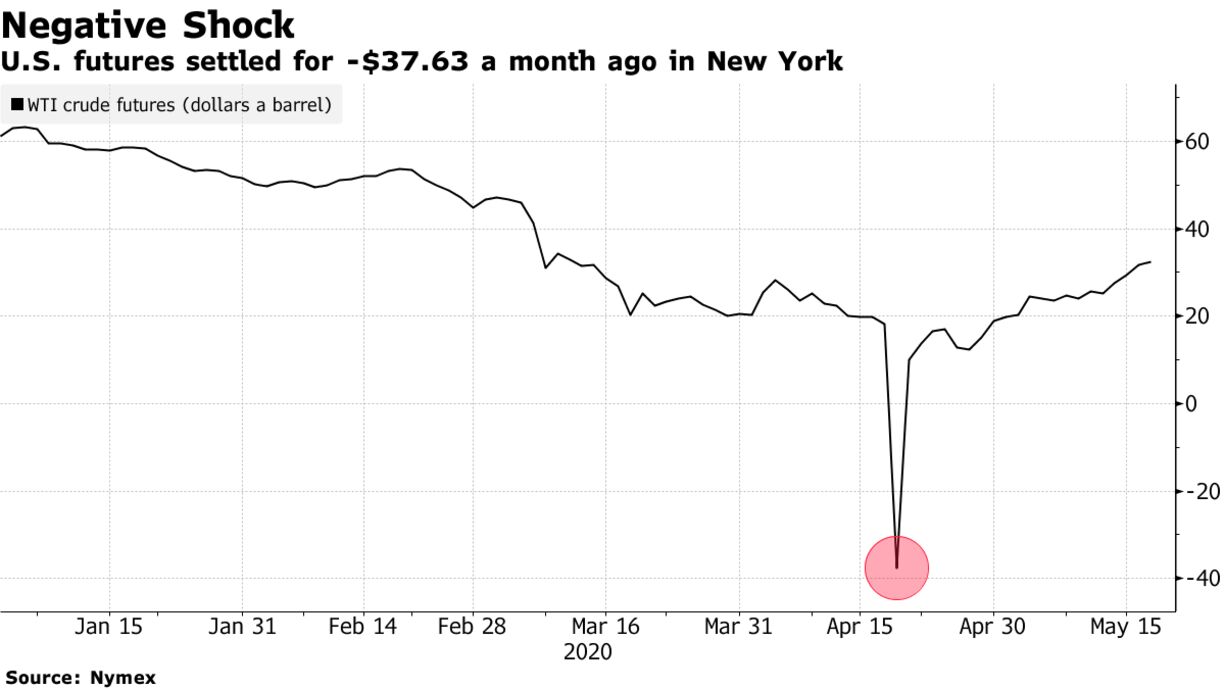For the world’s most important commodity, there’s never been a month like it.Just a few weeks ago, crude oil was akin to industrial waste in some parts of the world, something you had to pay people to take away. Now prices are surging, up about 70% in New York since the start of May.
The turnaround, which has been welcomed from Riyadh and Moscow to the White House, came quicker than most people were expecting but wasn’t easy. Painful OPEC+ production cuts and the world’s risky first steps out of coronavirus lockdown have lifted the market out of the abyss of negative prices, but either of them could falter.
“I think the worst is behind,” said Pierre Andurand, chief investment officer and founder of Andurand Capital Management LLP. “OPEC+ cut enough, and demand will slowly, gradually recover.”
It was the afternoon of April 20 when panicked sellers drove the price of the U.S. crude benchmark below zero for the first time in history. In one of the most extraordinary 20-minute spans in the history of financial markets, West Texas Intermediate fell as low as minus $40.32 a barrel, stunning everyone from veteran brokers to retail investors.

Two big things have changed since then.
First, the flood of unwanted crude has abated. Saudi Arabia ended its price war with Russia and stopped flooding the market with record production. Instead, the pair led their allies in the OPEC+ alliance to make their deepest and fastest output cuts on record. U.S. shale companies have also shut down unprofitable wells at an unprecedented rate.
As much as 17 million barrels of a day of crude will have been taken off the market by next month, Mohammad Barkindo, secretary-general of the Organization of Petroleum Exporting Countries, said in a Bloomberg TV interview. At the same time, the 30% drop in global oil consumption seen in April is abating. Green shoots of recovery are emerging around the world as businesses reopen and drivers return to the roads from Berlin to Beijing.
